4-Day Kyoto Itinerary with Nara and Osaka Day Trips

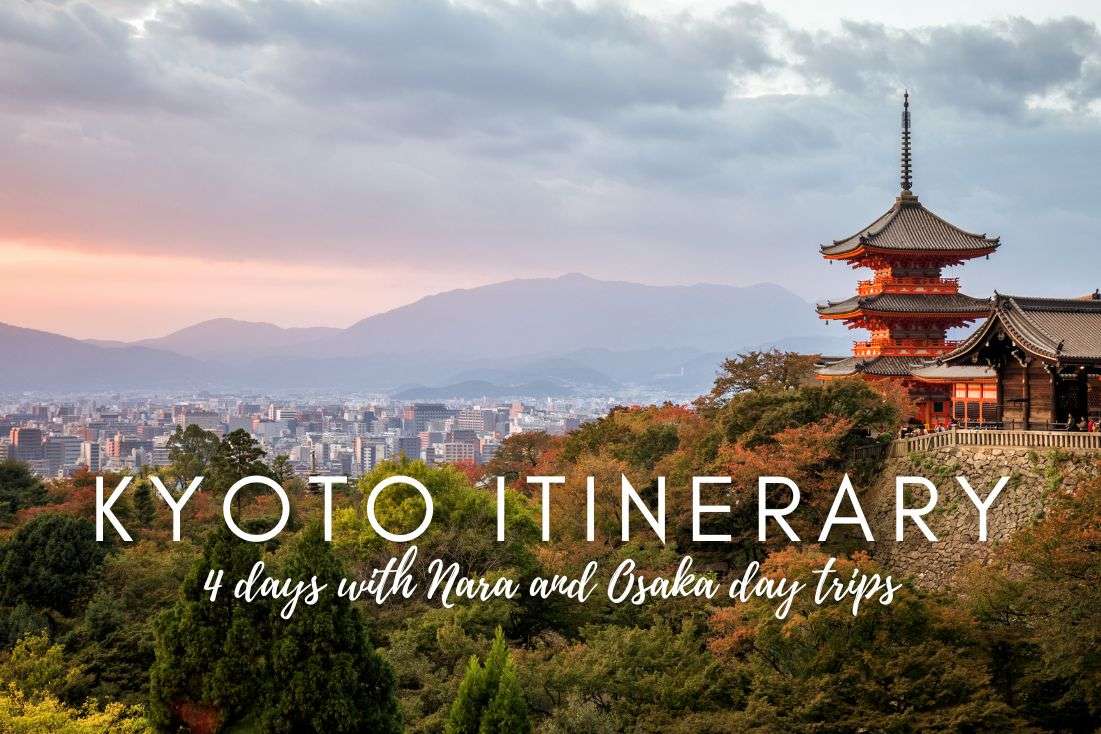
Unless you have a temple fetish, you’ll be content with 2 full days in Kyoto and 2 extra days to see Nara and Osaka as day trips. I loved Kyoto and Nara way more than Tokyo, and if I were to re-do my Japan trip, I’d probably skip Tokyo altogether (except for the epic karaoke scene where I found my hidden talent—rapping!).
Read my FAQs for some real info from someone that’s actually been to these places—I read so much nonsense when I was doing my research before our trip. Then, I’ll give you a step-by-step breakdown of this fine Kyoto Nara Osaka itinerary, including how to get to each stop, how long you’ll spend there, what you’ll pay, and what you should see when you get there. All that plus my insider tips so you can get the most out of your trip.
Overview of your 4-day Kyoto Nara Osaka itinerary + maps
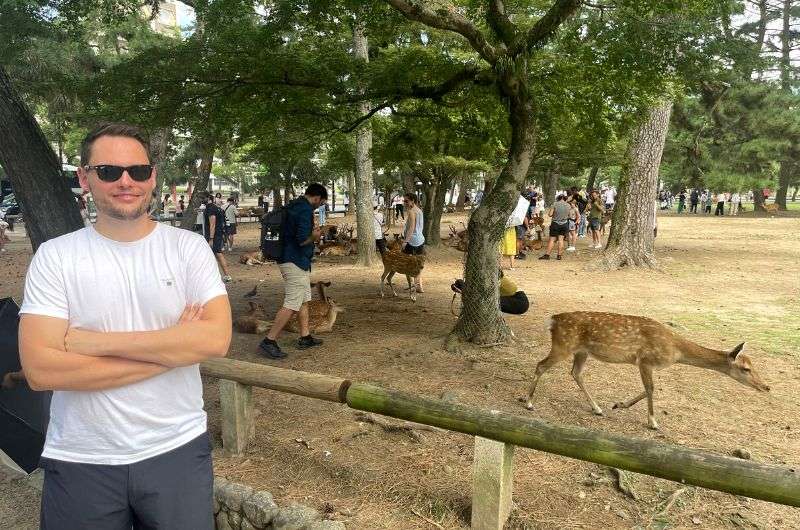
Are you ready to see some animals in Nara Golden Park?
This is a brief trip plan for your Kyoto + day trips itinerary. You can also use it as a 2-day itinerary for Kyoto if you’re very short on time and just drop the day trips, though Nara should really be included—it’s gorgeous! Osaka is the most expendable, so if you’re looking to cut the itinerary short, that’s where to cut.
Day 1: Kyoto outer city (Arashyiama Bamboo Forest, Sagano Romantic Train, Kinkakuji, Fushimi Inari Taisha, Sanjusangendo, Kyomizu-dera)
Day 2: Kyoto inner city (Kyoto Railway Museum, Nijo Castle, Gingakuji, Nishiki Market, Samurai Ninja Museum, Gion)
Day 3: Nara (Kofuku-ji, Tōdai-ji, Kasuga Taisha, Naramachi quarter, Yoshikien and Isuien Gardens)
Day 4: Osaka (Universal Studios OR Dotonbori neighborhood, Shinsaibashi or Horie quarter, Osaka Castle Park, Umeda Sky Building)
Tip: If you want to see even more of Nara, see my Nara 1-day itinerary with tips for the top 10 must-visit places in the city.
Kyoto FAQ 1: Do I need a car in Kyoto?
Alright, let's tackle this driving dilemma. Do you need a car in Kyoto? In my grand opinion, absolutely yes. Look, most of the must-see spots in Kyoto are about as close to each other as cats and water—not very. Public transport? Sure, if you've got the patience of a saint and the time of a tortoise. But if you're like me, always on the go and craving speed, renting a car is the way to go.
Traffic in Kyoto is chill. I barely saw any traffic jams, making zipping around the city a breeze. And parking? Kyoto's got more mini car parks than it has temples (okay, maybe not, but there's a ton!). The rates are something like JPY 700 to 1100—a real steal compared to what you'd cough up in other big cities. So, in short, get a car and thank me later.
Kyoto FAQ 2: What’s the best area to stay in Kyoto for first-timers?
Stay in downtown Kyoto to minimize time getting to different places in the city. We stayed in the beautiful KAYA Kyoto Nijo Castle, which was lovely (seriously, perhaps the nicest room I’ve ever stayed in), but despite all the positives and being located in Central Kyoto, next time I visit, I’ll look for a place in the northern parts of Kyoto Station, slightly to the south of Central Kyoto. It’s closer to everything on this Kyoto itinerary (and most others).
Two other good area to stay in if you’re in Kyoto for the first time and want to be close to the best tourist attractions, is Downtown Kyoto or the northern part of Higayashima.
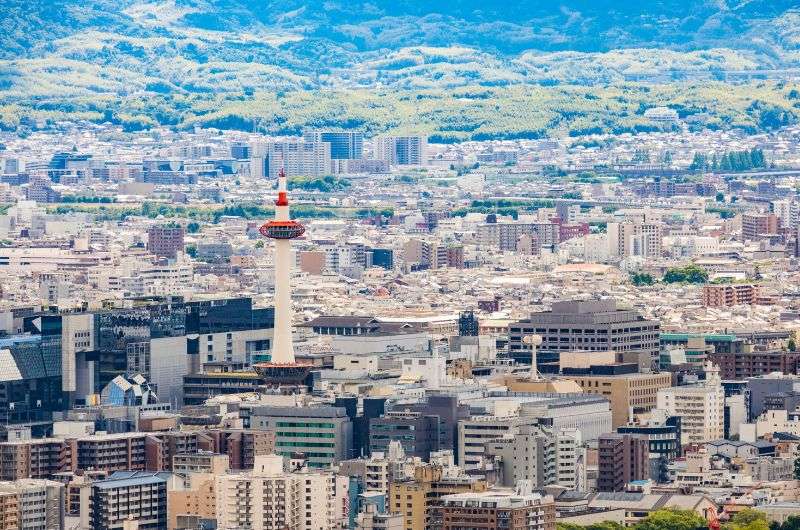
Kyoto city center
Kyoto FAQ 3: When's the best time to visit Kyoto?
Don't go to Kyoto in the summer, that’s for sure! Let me set the scene: Kyoto in summer is like being in a sauna, fully clothed. You’re walking around a bazillion temples in 33°C (91°F), and it just isn’t pleasant. I've been there, done that, and let me tell you, it's an experience I won’t be repeating. So, when's the best time to visit Kyoto? Spring or fall, hands down.
In spring aka late March or April, you get temps around 18°C (64°F) and cherry blossoms. And no, I'm not just trotting around Japan chasing pink flowers, but they're a pretty sweet bonus. Come fall (September and October), it's a whole different color palette—think of it as nature's fireworks before winter sets in. Also better than summer, and with the least crowds and better hotel prices.
Kyoto FAQ 4: Is 2 days enough in Kyoto?
2 days in Kyoto, with an extra day each in neighboring Nara and Osaka, is a pretty solid plan. Unless, of course, you're utterly obsessed with temples. With over 1,600 temples in Kyoto alone, you’ll need to add on a few days if you’re going to satisfy that fetish.
Now, don't get me wrong. You could easily fill three days in Kyoto, but that's a temple marathon, and trust me, temple fatigue is real. It's like eating steak for every meal—sounds great but you'll crave a change pretty quickly. So, unless you've got all the time in Japan, like you're on a never-ending vacation, it's wise to mix things up. Maybe jet off to Okinawa next?
Kyoto FAQ 5: Is Nara a day trip from Kyoto?
It’s not a question of “if”, Nara is the best day trip from Kyoto! You should not and cannot miss Nara, and for me, it’s an integral part of the Kyoto experience. You can easily see the top places in Nara in one day, so it’s a no-brainer—which is why Nara is part of this Kyoto itinerary.
Kyoto FAQ 6: Can Osaka be a day trip from Kyoto?
Just like Nara, I added Osaka on as a day trip from Kyoto, because it’s close and there’s not much to do there for longer than a day. Osaka is unique because it also features Japan’s Universal Studios, which I highly recommend you visit. Seeing the locals go nuts over Pokémon and Mario just hits differently when you’re in Japan. On this Kyoto–Nara–Osaka itinerary for 4 days, I’ve also written a day plan for those that have no interest in visiting Universal Studios and just want to focus on Osaka city itself.
The 4-day Kyoto itinerary starts… now!
Day 1 of Kyoto itinerary: Outer city
Get today's route already set up for you on Google Maps
Main sites visited on day 1: Arashyiama Bamboo Forest, Sagano Romantic Train, Kinkakuji, Fushimi Inari Taisha, Sanjusangendo, Kyomizu-dera
Restaurant tips: Dragon Burger | Smoked & Grill Lotus
Hotel recommendations: KAYA Kyoto Nijo Castle
Further reading: Kyoto’s Top Attractions | Japan Travel Tips | Food in Japan
Kick off your Kyoto trip with an early morning (though the typical Asian breakfast you get at the otherwise lovely KAYA Kyoto Nijo Castle Hotel takes getting used to), you’ve got a train to catch! I’m halfway kidding—you’ll drive to the first stop, the train is just a little tourist attraction you’ll do on the spot.
Don’t forget to live in the moment and really enjoy it—the rest of the day will be non-stop temples and shrines! Don’t get me wrong, they are stunningly beautiful, but also a tad repetitive.
Day 1—Kyoto—stop 1: Arashyiama Bamboo Forest and Sagano Romantic Train
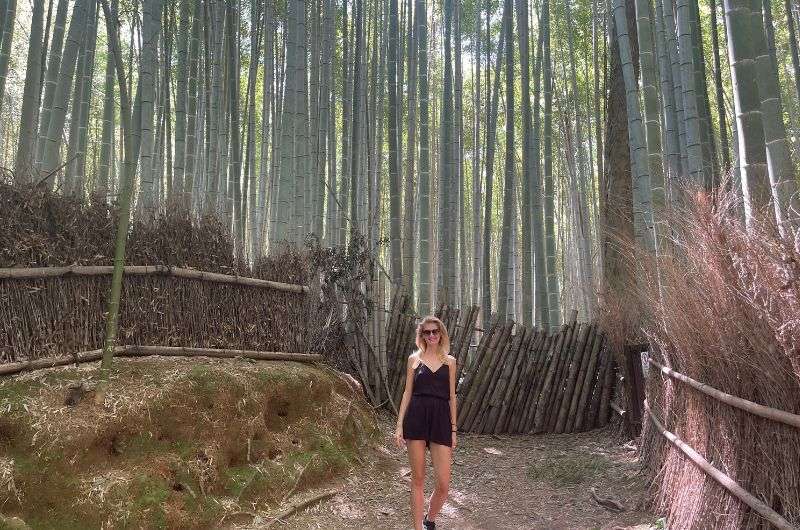
My girlfriend in the Bamboo Forest
Distance from central Kyoto: 8 km (5 mi), 25-minute drive
Time spent there: 2 hours
Your first stop of the day is the famous bamboo walk in Arashiyama, about 20 minutes outside of central Tokyo. You’ll also want to hop on the “Sagano Romantic Train” which takes you—slowly but surely— through the nearby ravine, offering half an hour (one way) of picturesque scenery.
Tip: If you aren’t happy with just a couple of hours in Arashiyama, head over to my 1-day Arashiyama itinerary. It includes many extra stops, shrines, river walks, and viewpoints that will easily stretch this stop to at least half a day to even a full day.
There are many parking lots around the start of the bamboo forest trail, so just pay attention to the prices—they increase in peak tourist season. Some are paid by the hour, some have a daily fee.
The path through the bamboo forest is only about 500 m (0.3 mi) long, so you don’t need long to walk through it. And I was surprised that although it’s just a forest of bamboo trees, it’s impressive! Those things are massive! I really thought bamboo tree trunks are thinner.
As you’d expect, everyone and their dog wants a photo of themselves walking all alone down the path of the Arashiyama Bamboo Forest. That just means there’s a ton of people there and everyone is trying to get the shot at once, so the earlier you get there, the better your chances are of it being less crowded. It’s open non-stop, so it’s really up to you when you go. It’s literally one sidewalk, you can’t walk inside through the forest all willy nilly, so everyone is condensed to one narrow path.
The entire area around the bamboo path is very pretty, with trails on the hill behind the bamboo path leading to some nice viewpoints and gardens, so stick around and explore a little. I’d skip the myriad temples that are close by, since you’ll be visiting plenty of those in the coming days already.
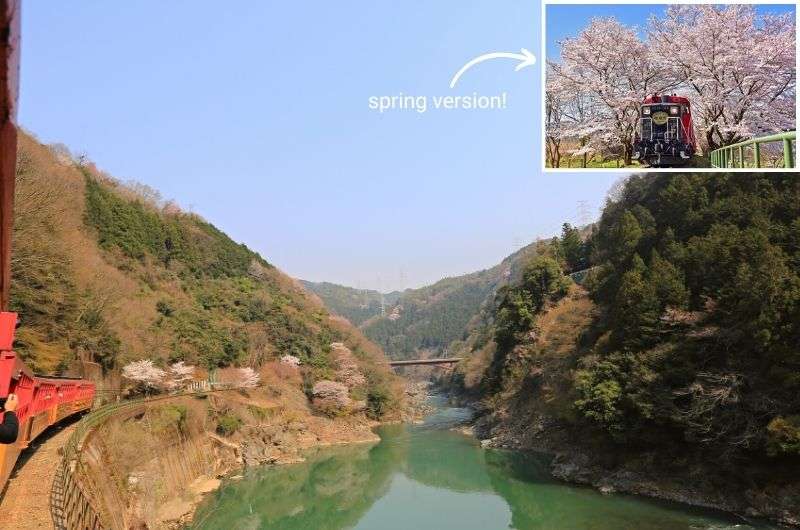
The Sagano Romantic Train is all views!
The Sagano Romantic Train goes from Saga Torokko station to Kameoka Torokko Station, a route of about 7 km (4.3 mi), but you can hop on at the Torokko Arashiyama Station that’s closest to the bamboo forest, too.
To get tickets for the Sagano Romantic Train, either buy them in advance at travel agents or try your luck on the day. Sales start at the train stations around 8:30 am on a first-come-first-served basis (trains start around 9 am). They sell tickets for the seats first, then you can get a few standing tickets, and then the train is sold out and you’re out of luck. I suggest heading to the station first thing and then doing the bamboo forest while you wait for your train time.
Tip: Unless you’re visiting when the weather sucks, try to get tickets for the coveted “rich car”. Car no. 5 is open-air, while all other cars have glass windows. They do open but it’s not the same as getting the breeze of fresh ravine air guaranteed. Then again, umbrellas are forbidden on the train, so expect to get wet when it rains.
Make sure to get a return ticket for the train as well, get back to your car and head out—it’s time to see some temples!
- Tickets: free entry to the forest, JPY 620 for Sagano Romantic Train (one way)
- Sagano Romantic Train official website
Day 1—Kyoto—stop 2: Kinkakuji
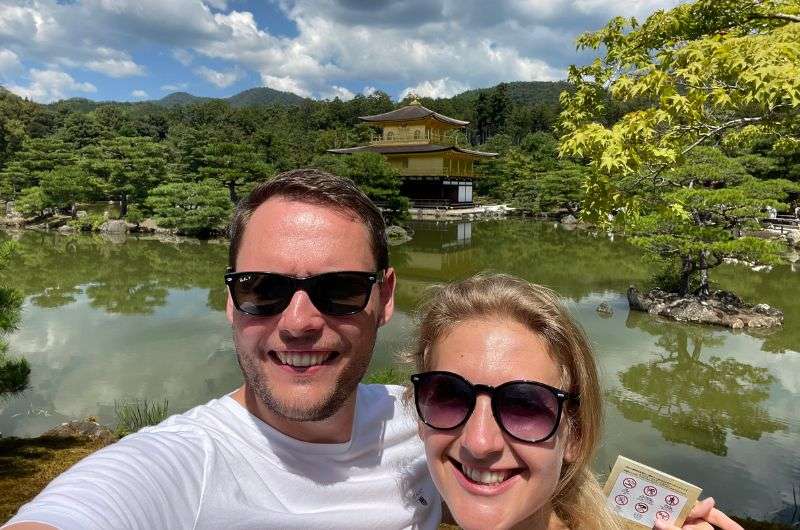
Sorry for outshining you, Golden Pavilion
Distance from last stop: 7 km (4.3 mi), 25-minute drive
Time spent there: 1.5 hours
From Arashiyama, drive to Kinkakuji—one of the 3 most important buildings in Japan (Nikko’s Toshogu Shrine and Tōdai-ji in Nara are the others), so be ready to be impressed. I was.
There are two things that make a Kinkakuji visit easy: parking right at the entrance, and trash cans! A real luxury after carrying your trash in your pockets the whole rest of your Japan trip.
Again, Kinkakuji is a tourist magnet (I didn’t say tourist trap), so expect lots of people, but at least here there’s a designated walking direction, so the sea of people flows along nicely. But stopping to take photos is another story. I was fed up with western tourists at Kikakuji—they butt into shots like they own the place. Japanese visitors, on the other hand, manage to get their own shots and give everyone some breathing room, so it’s proven it can be done. Learn, losers!
Kinkakuji was a shogun’s retirement villa, and I can say he set himself up pretty well: picture a golden pavilion standing on a lake surrounded by luscious nature. It has 3 floors, each built in a different architectural style: the 1st floor is built in the Shinden style of palaces during the Heian period, the 2nd floor is gives samurai home vibes in Bukke style, and the 3rd floor is that of Chinese Zen style, with gold inside and out and has a golden Pheonix on top.
You’ll need to be content with getting a good view of the pavilion from across the lake, because entrance is forbidden. After you push all the annoying tourists out of your photos you continue on through the gardens and a teahouse where you can rest a bit under the red maple trees. Being such a small place means you only need an hour or so to see it at a leisurely pace.
- Tickets: JPY 500
Day 1—Kyoto—stop 3: Fushimi Inari Taisha Shrine + lunch
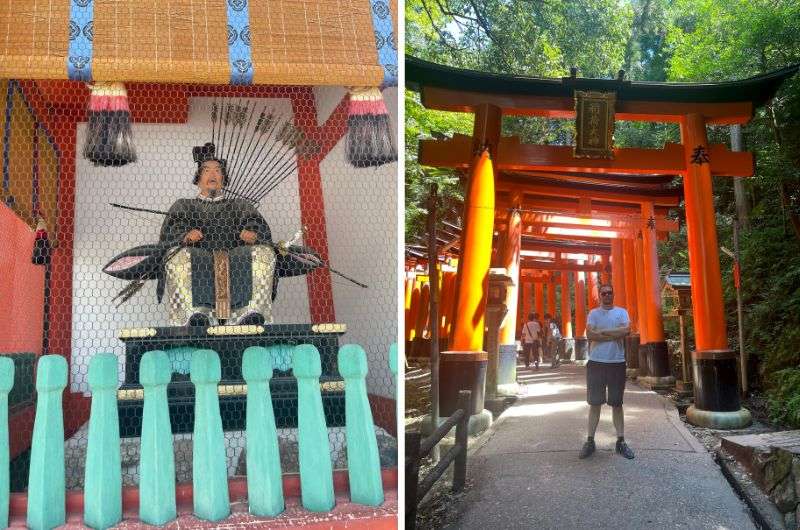
Why so many torii gates? Thanks to the rice business...
Distance from last stop: 11 km (6.8 mi), 35-minute drive
Time spent there: 2 hours
Fron Kinkakuji, drive back to central Kyoto, park at the Fushimi Inari Taisha Shrine parking lot (parking’s free and huge), and walk a few blocks to Dragon Burger. Wait… what? Oh, yeah, it’s time for lunch!
Lunch break!
Now’s a good time to take a breather and eat something, because you’ll be taking quite a hike on this next stop (or you could run there, like the little geisha in the 2005 movie Memoirs of a Geisha).
I know, I know, you’re in Japan, why are you having burgers? Well, because this may just be the best burger I’ve had, EVER. I don’t even think it was because I was missing western food, it was just really, really good. Dragon Burger is a small bistro-type establishment, so you just eat and run.
After fueling up, go to Fushimi Inari Taisha—an absolute must-see on any Kyoto itinerary. If you only saw one thing in the city, this would have to be it. It’s just so… Kyoto! It’s the one with a thousand red torii gates. I have to say that because of how much hype this place gets, you may be left feeling slightly underwhelmed, so manage your expectations. Still, where else in the world can you take a hike under hundreds of red torii gates??
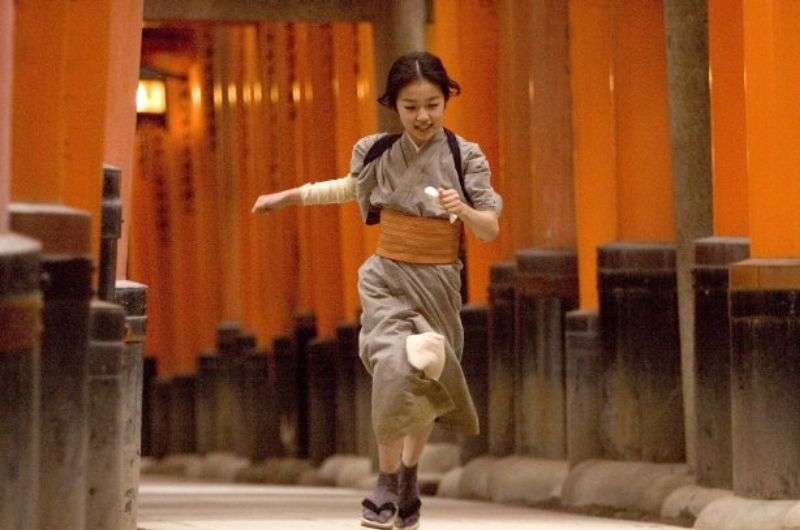
Memoirs of a Geisha—that's where you know it from
Why are there so many torii gates at Fushimi Inari? The shrine is dedicated to rice and commerce, and each of the red torii has been donated by a Japanese business. This way, they’re expressing gratitude to the business gods (and probably hoping to stay on the guy’s good side in the future, too). Any why rice? Duh, this is Japan… and Fushimi Inari is the most important shrine in Japan dedicated to Inari, the rice goddess.
The number of tourists flocking to this place is part of the reason that it just isn’t that magical as you think it will be. But I get it, I added to the body count too, after all. On the other hand, the further up on the trail you go, the less people there will be, because, it’s about 4 km (2.4 mi) or 2 hours or walking under torii gates at the base of a mountain, with lots of side trails and smaller shrines in the forest, too. You may or may not want to walk the whole thing.
An important piece of information is that the main shrines are before all of the torii madness, so you could just look at that and take in the first 30 minutes or so under the torii gates before heading back (and leave the rest of the trail more peaceful for the rest of us!). You will see that once you get to Yotsutsuji shrine there is a viewpoint and some cafes, a lot of people turn back. That’s when the real magic starts. I felt like I’d lef tKyoto altogether when I was up there.
The nice thing about passing under a thousand gates in the blistering summer heat is the shade they provide, though they are spaced out more the further up you go.
Tip: You can pay to get your name written on one of the gates, which could also be a pretty cool souvenir for someone back home. And it takes up no space in your luggage! Oh, btw, I have an article about packing carry-on bags like a pro, have you read it?
- Tickets: JPY 500
Day 1—Kyoto—stop 4: Sanjusangendo aka Rengeo-in
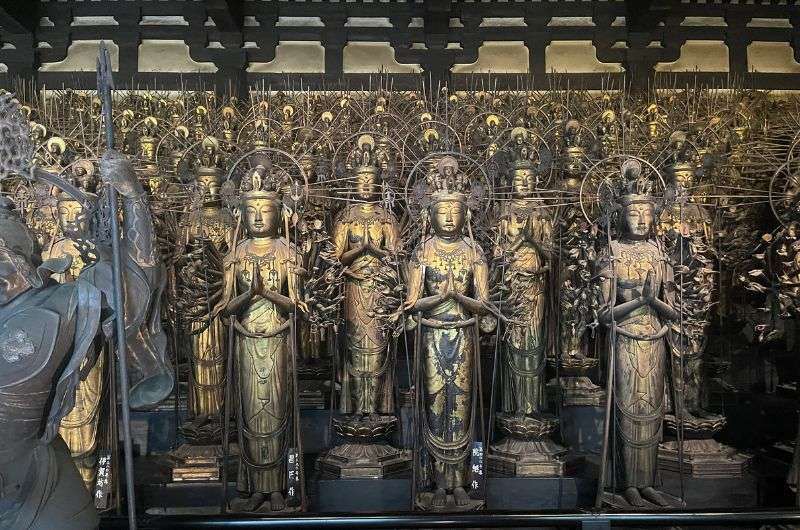
The god's statues inside the Sanjusangendo temple
Distance from last stop: 3 km (2.4 mi), 10-minute drive
Time spent there: 30 minutes
Drive just 10 minutes to the north before you reach your next stop on your Kyoto itinerary: Sanjusangendo. We parked in a random parking lot, and though I can’t pinpoint where that was on a map, parking in Kyoto really is quite easy, so don’t worry you won’t find a spot. There are numerous little parking lots all over the place.
While most Japanese shrines and temples are mainly attractive from the outside, the interior of Sanjusangendo is where it’s at. Inside, you’ll marvel at 1001 statues of the goddess Kannon, plus 28 of her guardians. There’s nothing else to do there, but just seeing the sea of human-size, gold leaf-plated lady statues, each one slightly different from the others, is mesmerizing.
Who is Thousand Armed Kannon, the main deity of Sanjusangendo? Kannon is the goddess of compassion and mercy. With her 11 heads, she can see the suffering of mankind, and her 1000 hands allow her to multitask and help everyone out. Anyone with a keen eye will quickly figure out that there’s no way she has 1000 arms. It’s not all a lie. She has 42 arms, out of which the regular 2 don’t count (those are her personal arms for things like brushing her teeth and holding her coffee cup), and in Buddhism, there are 25 planes of existence. A little bit of simple math and you’ve got 1000!
You’ll probably also notice that the main hall of Sanjusangendo (where all the statues are) is extra-long—the longest wooden building in Japan at 120 m (394 ft). Even the name commemorates this: Sanjusangendo means “temple of 33 bays” and references the 33 intervals between the building’s support columns. I find it funny that it’s not named something like “the temple of the impressive statues” or “the temple of the really important goddess”, but instead it’s “look at the cool long building we built”.
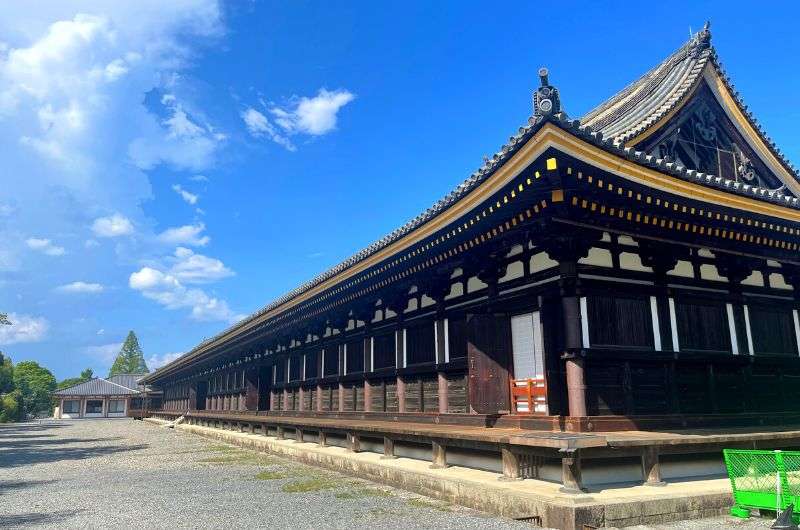
This is what the majestic, loooong Sanjusangendo temple looks from the outside
There’s also a nice garden and 112 m (367 ft) of Shintoist wishes where my superstitious girlfriend picked up a very VERY large number of wishes. For me, the collection of bows and other weapons was way more interesting than some scribbles on paper.
Fun samurai fact: Sanjusangendo was built by a samurai for a Japanese emperor (on the emperor’s own land), which seems like a nice thing to do until you learn that for doing so, the samurai got the title of “Chancellor of the Realm”. He was the first samurai to get such a lofty title, and I’m pretty sure he wasn’t surprised by this and actually built the thing for this sole reason (he was a politician). To me, the title sounds like “Guardian of the Galaxy”, so I’m kind of impressed. The emperor’s mausoleum is on the grounds of the temple.
- Tickets: JPY 600
Day 1—Kyoto—stop 5: Kiyomizu-dera Temple and Higashiyma quarter
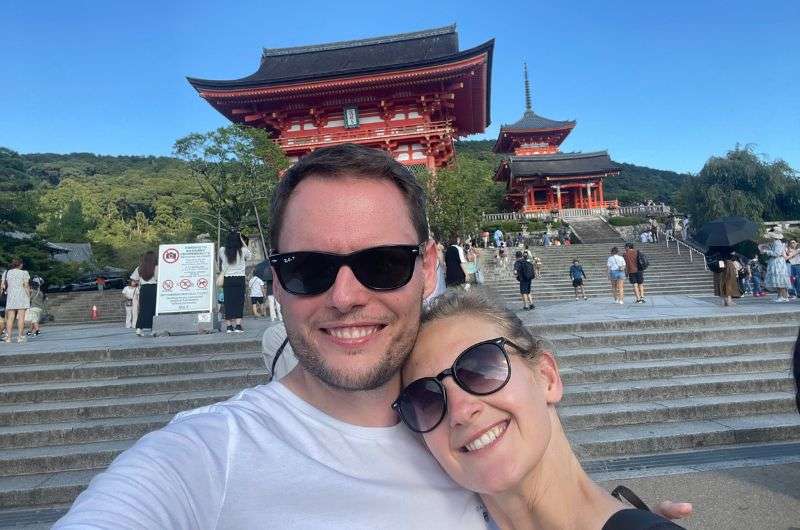
Exploring Kiyomizu-dera Temple (I hope you appreciate the gate on my head!)
Distance from last stop: 2 km (1.2 mi), 10-minute drive
Time spent there: 2 hours
Last but not least, head to Kyoto’s premier temple, the one that in hindsight was one of my absolute favorites in Japan: Kiyomizu-dera. I visited at the beginning of my trip, so I didn’t realize just how fantastic it is when compared to many other shrines and temples that I saw later on. Don’t make the same mistake I did and really enjoy your time here. Kiyomizu-dera’s the whole package—the exteriors, scenery, and all the fun love stuff are the main attractions—albeit very, very crowded. You’ll need at least 2 hours to give it a proper wander.
This is the only place in Kyoto where it was an expensive and slightly frustrating endeavor to park our car, so you may end up parking a bit further away and walking. No worries though, you’ll be able to take a closer look at Higashiyma quarter, which is absolutely nuts. You haven’t seen a crowded street if you haven’t been to Higashiyma. It’s totally crazy! But it’s also full of nice, old buildings where the souvenir shops look cuter than I want to admit, as well as many small temples. But you’ll want to skip those and head straight to Kiyomizu-dera.
Kiyomizu-dera is probably most known for the massive wooden terrace of the main hall with killer views of Kyoto. It’s dedicated to Buddhist and Shinto deities, so if there’s any place where the magic of love could work out, it’s probably here. Read about the difference between Shinto shrines and Buddhist temples in Japan
You enter through the main gate, Niomon, a big, red building. It’s the first spot where you’ll be above the surrounding buildings, so it’s bound to be the spot for photos, meaning there’s always a human traffic jam there. The’re also the west gate, Saimon, that leads to paradise, so don’t walk through it before you’ve seen the rest of the temple grounds! Just kidding. But don’t try to enter through it, it’s a no-go.
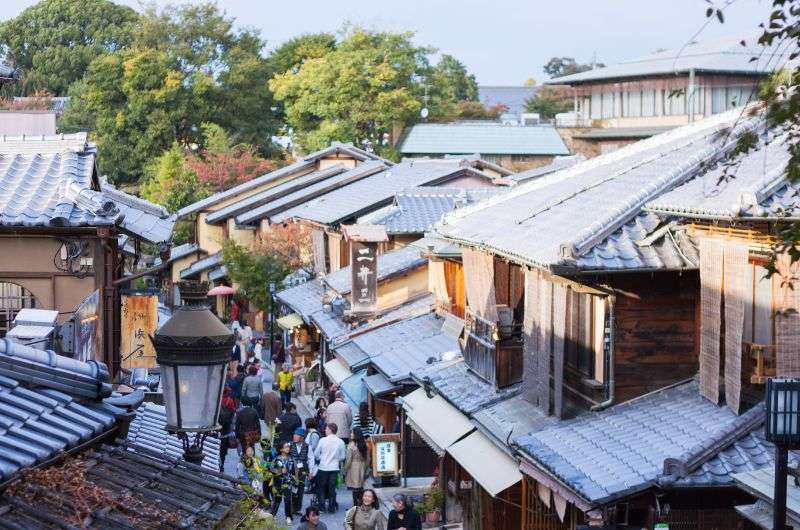
Walk through the Higashiyama quarter
The main hall, built entirely without nails, is the highlight of the grounds, but take your time and really walk around the whole area, too. There's the love shrine at the back, complete with those 'love stones.' Walk from one to the other with your eyes closed, and bam—love is supposedly on its way.
Otowa Waterfall, the temple's namesake, is a tranquil spot where you can drink for longevity, success, or love. Just remember, picking all three wishes is a big no-no. Everyone drinks from the same ladles, but thanks to some nifty UV sanitizing tech, it's all good. I went for the longest sitting ladle, just in case.
Then you’ve got the Zuigudo Temple, where you can literally walk in the dark, reliving your womb days. Bit odd, but hey, when in Kyoto, right? And for those deep into the love game, check out the Koyasunoto Pagoda nearby. It's all about childbirth and yet more views.
Make sure to walk around the whole grounds, the views are really worth it (better from the bottom levels, I personally think).
Since this is the last stop on your itinerary today, make note of the closing time: 6 pm.
Tip: There are 3 special nighttime viewing periods every year when Kiyomizu-dera is open until 9:30 pm. It’s only 3 days in each season, so you’d be lucky to be there on these specific dates. See the schedule herev
- Tickets: JPY 400 for the main hall
Dinner
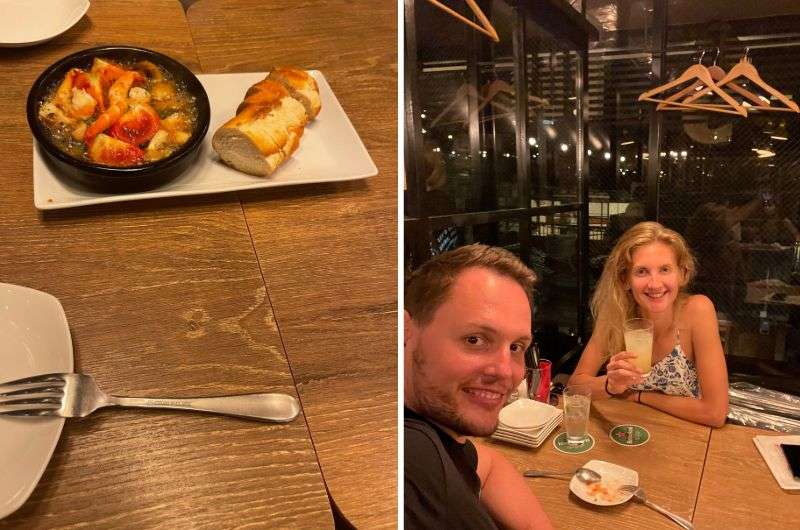
Getting “ojillo” in Smoked & Grill Lotus
Your first day in Kyoto is coming to an end. It was a long one! Why not have dinner in grill house obscurely located on the second floor of a building? It’s a very strange feeling to be taking an elevator into a restaurant, so don’t be surprised. Also, the name is weird: Smoked & Grill Lotus. But the food!
First off, the guests are a mix of tourists and locals, and the locals are way more rowdy than the westerners. That always makes me grin, considering how uptight conservative the Japanese seem most of the time. Maybe it’s the JPY 700 drinks they serve at the Lotus? Show me another big city where you get a cocktail for less than 5 bucks!
We had to order the ajillo twice, it was that good—a pan full of garlicky shrimp served wih a baguette that reminded me of the pil pil I had in Chile and it was to die for. Or at least to order twice for.
The bbq ribs we had after that made it to the very top of my bbq ribs list (you don’t have one yet?). So, so good!
Day 2 of Kyoto itinerary: Inner city
Get today's route already set up for you on Google Maps
Main sites visited on day 2: Kyoto Railway Museum, Nijo Castle, Gingakuji, Nishiki Market, Samurai Ninja Museum, Gion
Restaurant tips: Nishiki Market | Teppan Tavern Tenamonya (make reservations way in advance!)
Hotel recommendations: KAYA Kyoto Nijo Castle
Further reading: Kyoto’s Top Attractions | Japan Travel Tips | Food in Japan
You have 2 full days in Kyoto on this itinerary, so put on your good socks and let’s head out again. You have a train museum to catch!
Day 2—Kyoto—stop 1: Kyoto Railway Museum
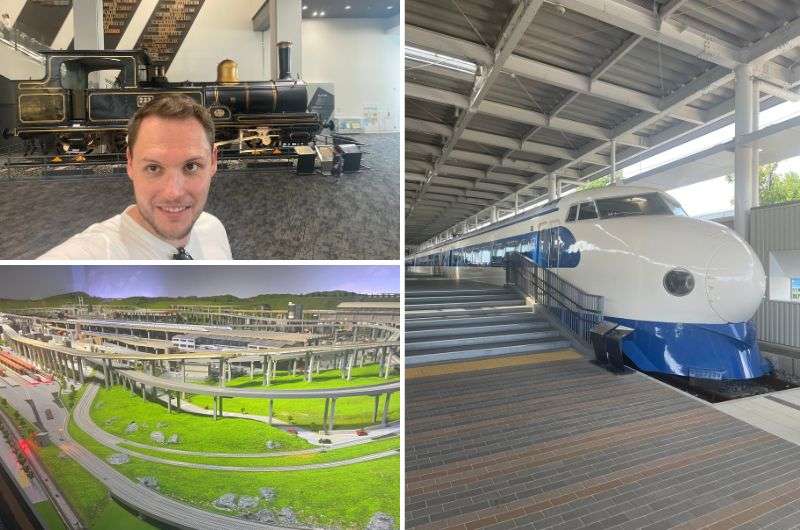
Kyoto Railway Museum
Distance from KAYA Kyoto Nijo Castle Hotel: 4.5 km (3 mi), 15-minute drive
Time spent there: 1–2 hours
In case you weren’t aware, trains are a big deal in Japan. Not only is the train system efficient and uber punctual (have you heard about the one where a train company had to apologize for leaving 20 seconds early?), but 45 of the 51 busiest train stations in the world are located in Japan. There is even an entire train-obsessed subculture called densha otaku with train fanatics doing everything from pretending to be conductors to recording train sounds or reading encyclopedia-size train schedule books. How very Japanese of them!
This Japanese train-madness is why I am telling you to start your second day in Kyoto in the Railway Museum—it’s just part of the culture. Even though I admit to being slightly disappointed at this museum, I do think it’s worth popping in for an hour or two and having a wander and a coffee in a train car.
As you’d expect, there are many trains on display, some of which you can go inside of, interactive exhibits, but also a lot of things just in Japanese, which wasn’t the best. What I liked most about this museum is all the kids squealing out of pure joy when they saw each train, the happiness was infectious!
- Tickets: JPY 1500
Day 2—Kyoto—stop 2: Nijo Castle
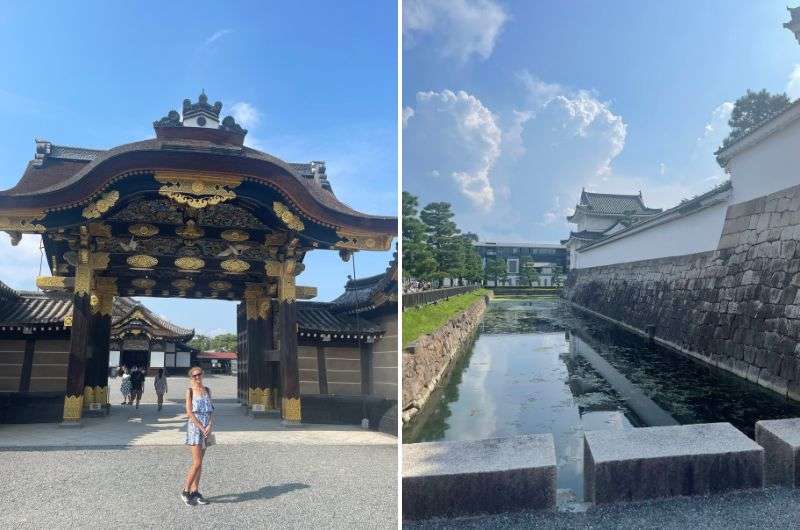
Beautiful gardens and the main gate of Nijo Castle
Distance from last stop: 3.6 km (2.2 mi), 10-minute drive
Time spent there: 1.5 hours
Next up on today’s plan is Nijo Castle. It can be described as a bunch of pretty palace buildings and even prettier gardens surrounded by walls and a moat. It used to be an ordinary shogun residence, then an extraordinary shogun residence when a 5-story castle was added, then an imperial palace, and finally a historic site. UNESCO likes it, so you should definitely take the time to visit when you’re in Kyoto. Nijo is entirely different from all the other highlights of Kyoto. It’s a nice change after all the temples and shrines!
The main building that you can visit at Nijo Castle is the incredible (and huge!) Ninomaru Palace, which is where the shogun would live and do business when he visited Kyoto. Unlike the castle that burnt down in a big fire, the wooden Ninomaru Palace is in its original form. You need to pay an extra fee of JPY 500 to go inside, but it’s very much money well spent (but still one of the most expensive tourist sites to visit in Kyoto).
You can squeak your way through the multiple rooms inside the palace (because of the nightingale floors that made sure nobody could sneak in unheard), pretending the shogun is on his elevated platform in the main room. Back in the day, if you weren’t VIP enough, you were only allowed to enter as far as the neighboring rooms and never lay your eyes on the shogun. Must’ve been an interesting way to hold meetings. I loved the interiors, very nice, very black and gold, sort of like my own apartment! I knew I was shogun material!
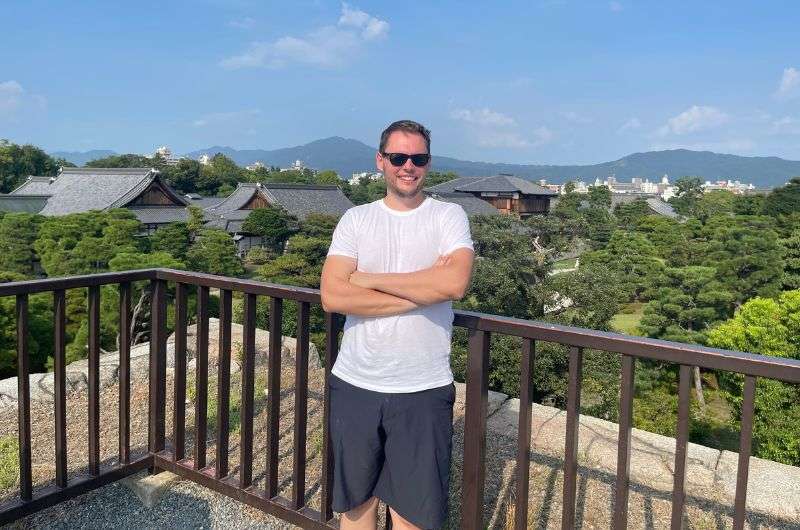
Soaking up the views at Nijo Castle
Then there’s the main circle of defense where the castle used to stand, but they never rebuilt it and instead, the Honmaru Palace took its place. Unless you visit Nijo Castle on one of the special occasions when Honmaru is open, you’ll only be able to catch a peek from the distance. Scramble up on the former castle walls for the best views.
The gardens surrounding all the buildings are themselves worth your time, especially if you can make it in late March or April for cherry blossom season. We didn’t, but it was still pleasant even without the pink flowers on the trees.
Audio guides are available, so I’d opt for that if you want to learn about the interesting history of Nijo Castle while you’re there (and have no desire to Google the info beforehand).
- Tickets: JPY 800 and JPY 500 extra for Ninomaru Palace
Day 2—Kyoto—stop 3: Gingakuji aka Jisho-ji Temple
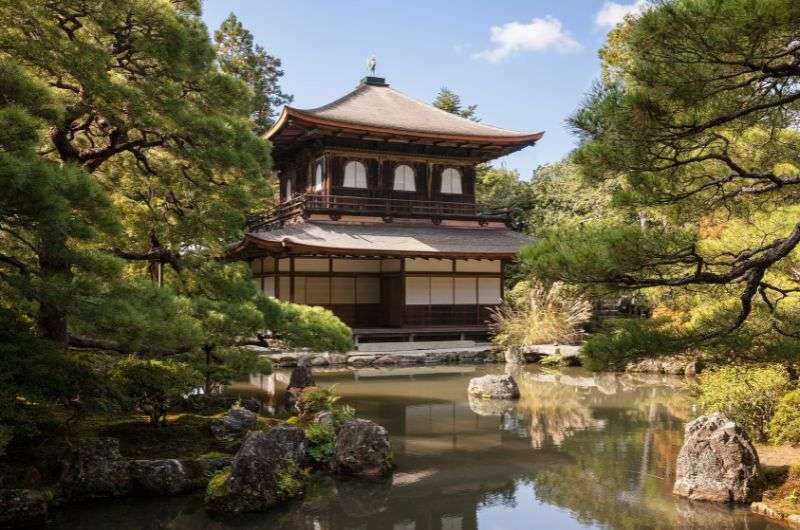
A shogun’s retirement villa—Ginkakuji
Distance from last stop: 6 km (3.6 mi), 20-minute drive
Time spent there: 1 hour
This next stop on today’s trip plan is a place I haven’t personally been, though it wasn’t for a lack of trying—it was closed! Not sure why, because normally it’s open 7 days a week. It’s also the only spot that’s away from the city center, so make sure to have a car for convenience.
I hope you have better luck visiting the “Silver Pavilion” than we did, and please report back if you do. Truth be told, it’s not actually silver, like, at all, and you can’t go inside any of the buildings, but I’d give it a go (I tried, I’m telling you!).
Gingakuji temple was created on the grounds of a shogun’s retirement villa, which he modeled after his dad’s place, Kinkakuji, aka the “Golden Pavilion”. It’s said that Silver Pavilion was a nickname that came about from this relationship rather than anything to do with its color (the Silver Pavilion is black with white screens).
A similarity between the two, besides the use of different architectural styles of the buildings and the garden landscaping, is that you see them from a circular path and can’t actually go inside any of the structures. Keep an eye out for the paintings on some of the sliding doors.
If I actually got to see Gingakuji, I think I’d also appreciate the sand garden called “Sea of Silver Sand” and the moss garden with ponds and little islands, though I’m not sure about the cone-shaped moon-viewing platform. That may be more of a head-scratcher.
- Tickets: JPY 500
Day 2—Kyoto—stop 4: Nishiki Market aka a late lunch
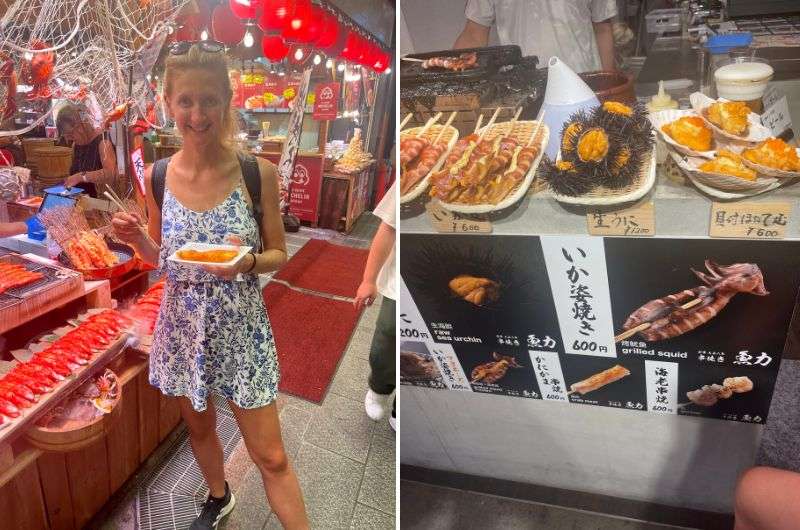
You won't go hungry at Nishiki Market
Distance from last stop: 5.4 km (3.4 mi), 20-minute drive
Time spent there: 1 hour
Get yourself back into town and head to what is usually my least favorite place in any city: the market. In hindsight, I admit I may have let my own bias towards crowded places cloud my judgement about Nishiki Market. Now, I’d say it was one of the most curious places on my Kyoto itinerary.
Nishiki Market is a street and market hall chock full of little shops and stands of almost entirely just food—beef skewers, tofu donuts, shrimp tempura, quail eggs, and… Mexican tacos? Yes, you’ll get tourist trap vibes here and there, but hey, you are a tourist! And they’ve literally trapped you if you actually enter. The sheer number of human bodies is enough to grab you and spit you out the other end an hour later.
But hey, at least you’ll be full—I recommend coming here for a late lunch and trying out the delicacies at some of the stands. Squid on a stick, anyone?
Tip: Don’t walk while eating, it’s frowned upon. Always finish one tasty tidbit before moving on to sample at other stands.
Day 2—Kyoto—stop 5: Samurai Ninja Museum
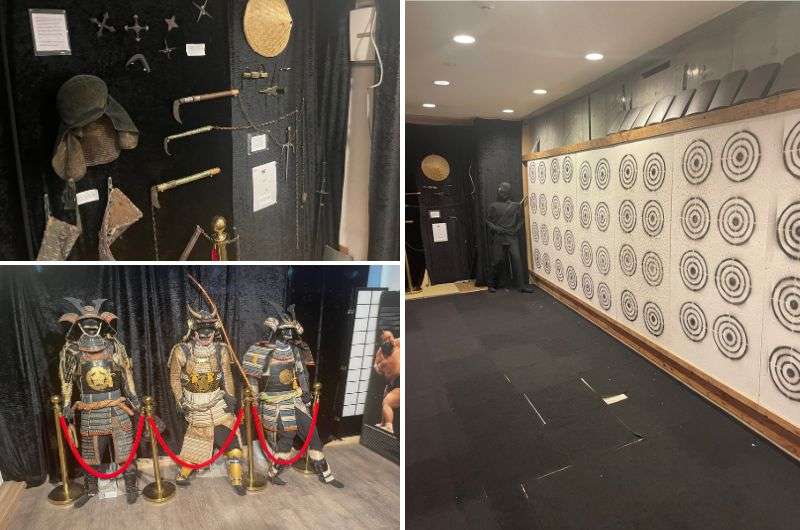
The cool exhibits at Samurai Ninja Museum
Distance from last stop: 5.4 km (3.4 mi), 20-minute drive
Time spent there: 1 hour
Just a couple blocks away from Nishiki Market is the Samurai Ninja Museum where you’ll head to next… you wouldn’t want to temple yourself out! And I promise that when you’re throwing those ninja stars at the end of your museum tour, you’ll be excited that you listened to me and came here!
At JPY 3300 per person, the Samurai Ninja Museum is an expensive experience, especially if you’re visiting with the whole family. That said, I did enjoy it, especially thanks to our fun and engaging guide (and the ninja stars that I excelled at).
If you’re like me and interested in history on a deeper level than your average tourist, you may find the information you get a bit basic. I did, however, enjoy the authentic Edo armor on display. Got stuck staring at it for a good several minutes while playing samurai movies in my mind.
I did find out some fun samurai facts, like:
- The fake mustaches were used because boys became samurais from the age of 12. To mask their young age from enemies, they got facial hair. I guess you have to be clever if you’re sending out tweens to fight for you.
- Samurais shaved their heads, for the simple reason of comfort: imagine all that hair under a sweaty helmet. Itchy much?
- And oh, some samurais were in fact weirdos that killed people just for looking into their eyes. Sheesh, you give a guy a sharp knife and he thinks he’s god or something.
- Japanese dragons have 3 claws, Chinese dragons have 5. Random, I know, but I love to expand my knowledge. You never know when you’ll need some good dragon wisdom!
At the end of the tour we threw ninja stars and there was a chance to play dress up and take photos. Not my jam, but I certainly proved I’m samurai material with those shurikens!
I recommend pre-booking if you’re visiting in high season and don’t want to risk a long wait. Our guide was fun and entertaining, which was a big plus.
- Tickets: JPY 3300
Day 2—Kyoto—stop 6: Gion quarter
Distance from last stop: 5.4 km (3.4 mi), 20-minute drive
Time spent there: 1 hour
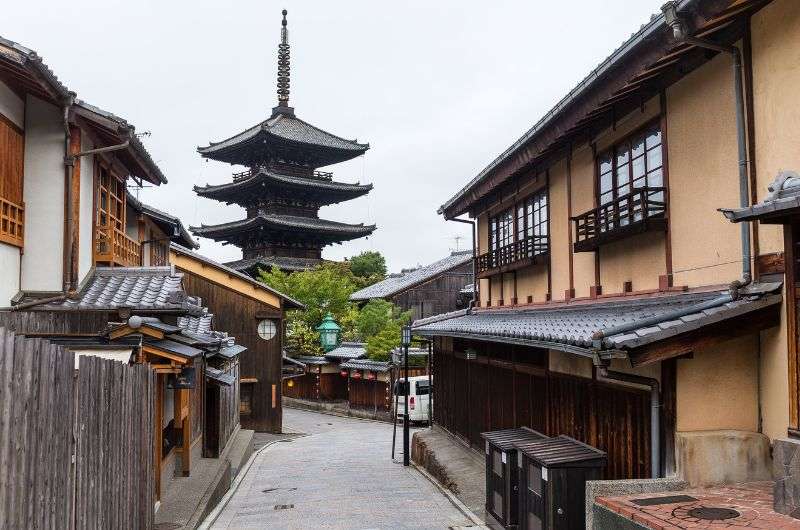
I’m not a huge fan of Gion quarter, but it’s where one of the must-visit Kyoto restaurants is, so why not take a stroll
This last stop of the day is here mainly because it’s where you’ll be getting dinner, and also because it’s one of those spots where even if I tell you it’s boring, you’ll go anyway to find out for yourself. So, go for it, now’s the time.
I just don’t get Gion quarter. It’s very popular and I guess the riverside path is nice, it has the narrow facades of the wooden merchant houses and tea houses… but that’s about it. But maybe you’ll appreciate it more. Maybe if you have a Geisha fetish, you can go and hope to see one (we saw exactly 0), but you probably will have to do with the minority of people walking around in kimonos.
You can visit Tatsumi Bridge, which is cute but unspectacular, but I’m really not sure why it’s such a frequent photo from Kyoto. It doesn’t represent it well at all, there are so many other more “Kyoto” spots in the city.
Hanamikoji Street is the main drag. Go there for the restaurants and shops. There’s a huge parking lot that makes it easy to get in and out fast.
Fun fact: In the movie “Memoirs of a Geisha”, the main character, named Chiyo, runs from Gion to Fushimi Inari Shrine to wish for a better life under the thousand torii gates. But, um, Fushini Inari is like 5 km (3 mi) from Gion, so nope, not in those shoes!
Dinner at Teppan Tavern Tenamonya
Today’s dinner spot is a riot—the reservation process and the emails you’ll get from them will be one of your most memorable experiences of your Japan trip! Just make sure to secure your spot as long in advance as you can.
Basically, the place is tiny and everyone wants to go there, so they have resorted to locking the entrance and only opening the door at set times for people with confirmed reservations. The email sounded like a mix between a warm invitation and a warning: "We lock the door because people without reservations try to storm our culinary castle, and sometimes cry when we try to make them leave."
Despite the odd reservation antics, the staff was super friendly (though—dare I say it—slightly fake?), and the food was superb. But a word to the wise: maybe skip their local specialty, Okonomiyaki. A weird cabbage pancake? No thanks.
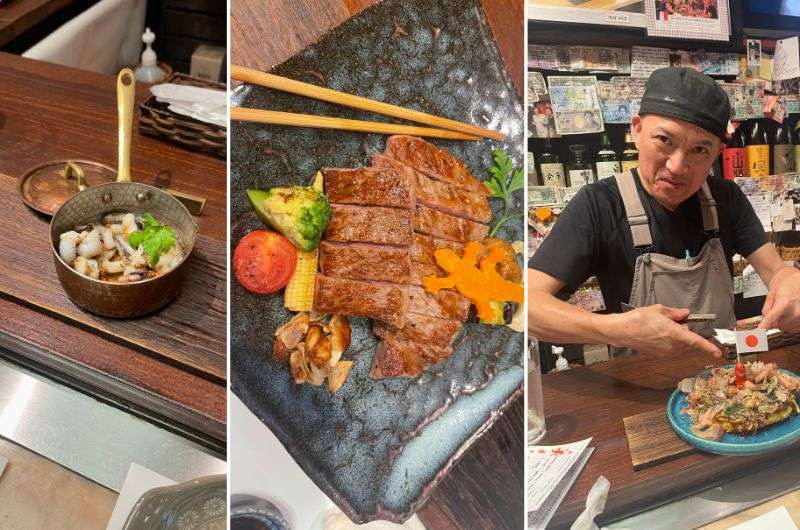
The food was delicious! The reservation process hilarious
Teppan Tavern Tenamonya is one of the many teppaniyaki restaurants in Kyoto. What are those, you ask? It’s a type of restaurant where your food is cooked on a large iron griddle, usually right in front of you. It’s an exciting way to eat, because the food is as fresh as it can be, plus you get sizzling delicious ingredients right in front of your hungry face (made extra special if the cooks are charismatic!). A lot of teppaniyaki restaurants are higher-end establishments where they only use top-notch ingredients like fancy beef and seafood.
Day 3 of Kyoto itinerary: Nara
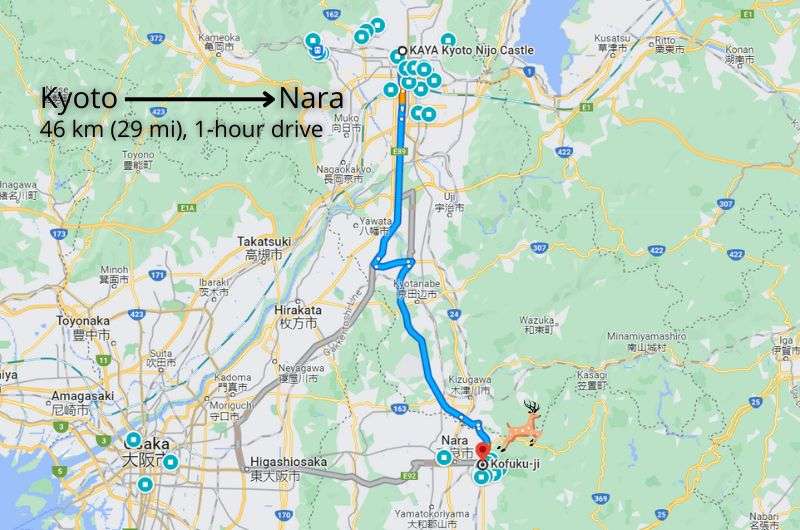
It’ll take you about an hour to drive from central Kyoto to Nara Park
Get a list of stops on this itinerary on Google Maps
Main sites visited on day 3: Kofuku-ji, Tōdai-ji, Kasuga Taisha, Naramachi quarter, Yoshikien and Isuien Gardens
Restaurant tips: Teppansousaku Lien (teppaniyaki) | Hanaroku (teppaniyaki) |Terato Restaurant (sushi)
Hotel recommendations: KAYA Kyoto Nijo Castle
Further reading: Top places to visit in Nara
Day 3 of the Kyoto–Nara–Osaka itinerary is here, and today, you’ll be taking a day trip to Nara, Japan’s first ever capital city. It’s not Kyoto exactly, but it’s such a worthwhile destination that I wouldn’t leave it out of any Kyoto trip. Think ancient Buddhist temples and Shinto shrines, Japanese gardens galore, and SO. MANY. DEER!
Lucky for you, all of Nara’s top sights are located in one small area at the foot of Mt. Kasuga. It’s about an hour’s drive from central Kyoto.
What’s up with all the deer in Nara? The sika deer living in Nara Park—all 1,400 of them!—are considered sacred because of a legend where the gods arrived in Nara riding white deer. The furry creatures in Nara aren’t white, but they sure are cute! You cannot go to Nara without trying to get a deer to bow to you (offer them only the crackers that you can buy in many spots around the park). They’ve learned to bow their heads, though when the competition gets tight or the deer to human ratio is off, they can get a little pushy. I wonder if they were the inspiration for Harry Potter...
Tip: Read more Nara FAQs in my comprehensive Nara Guide + Itinerary
Day 3—Nara—stop 1: Kofuku-ji
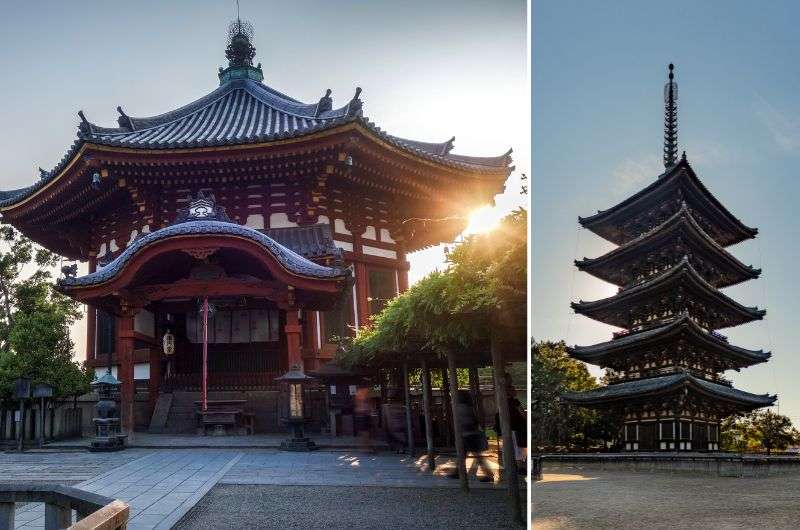
Kofuku-ji temple
Distance from KAYA Kyoto Nijo Castle Hotel: 46 km (29 mi), 1-hour drive
Time spent there: 1 hour
There’s a lot of construction going on at Kofuku-ji at the beginning of 2024, with some areas completely closed off. The main pagoda is covered up and work will continue until 2031. See official notices for up-to-date information.
First up on the itinerary today i Nara’s Kofuku-ji, the former family temple of the Fujiwara, who were the most powerful aristocratic clan in the Nara and Heian periods. It’s very old—1300 years!—and at the peak of the family’s power, there were about 150 buildings here in total. Today, there’s just a couple of handfuls of them.
I like the walk through the park full of deer towards the temple grounds. You can see the 5-story pagoda from far away—it’s the second largest pagoda in Japan. If only that dark wooden tower could tell the stories from its past!
You can enter the temple grounds 24/7, which is nice, though if you want to enter any of the buildings, you’ll need to plan a little bit. The recently renovated Central Golden Hall, the Eastern Golden Hall with a big Buddha, and Kofukuji's National Treasure Hall all have their own entrance fees and are open from 9 am to 5 pm. The treasure hall houses a lot of Buddha-related art, and even one of the most celebrated Buddhist statues in all of Japan—the six-armed Ashura.
Later today, you’ll be visiting the gardens close by that used to be where Kofukuji’s priests had their residences.
- Tickets: JPY 300–700 each for Central Golden Hall, Eastern Golden Hall, and National Treasure Hall
Day 3—Nara—stop 2: Tōdai-ji (temple)
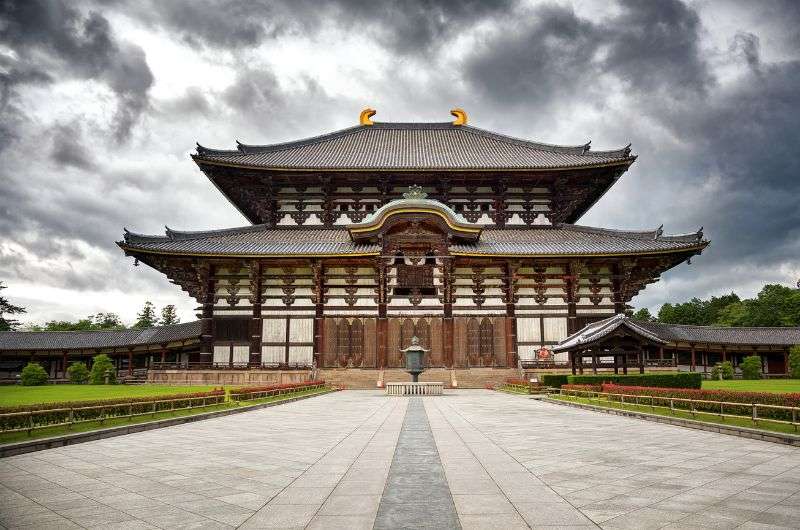
Tōdai-ji temple
Distance from last stop: 700 m (0.4 mi), 10-minute walk
Time spent there: 1–2 hours
From Kofuku-ji, walk to Tōdai-ji—one of the most historically important temples in all of Japan. History nerds like me will eat this place up! That’s why even though Tōdai-ji is in Nara, I put it at the top of my Top Things to See in Kyoto list (though it felt wrong to put it at no. 1, so you’ll find it at no. 2). And on my Nara Best Place List, it holds two spots!
Have I convinced you to have very high expectations for Tōdai-ji?! Get a free English guide on the spot (human, not brochure) if you’d like a more complex understanding of the temple’s significance.
Tōdai-ji was originally built in 752 when Nara was the imperial capital. It’s biggest claim to fame is the very large, wooden temple called Daibutsuden (Big Buddha Hall). That thing blew me away by just how massive it is, even more than Europe’s cathedrals. Daibutsuden is roughly 50 m (180 ft) long, wide, and tall.
The Buddha inside is supposed to be the “cosmic Buddha” who created the universe and all of the other Buddhas after him. You can try to reach enlightenment by attempting to squeeze yourself (or maybe your very small child) through the hole on the pilar close to the Buddha which is the same size as the statues nostril. Good luck and don’t get stuck. Also, how does “cosmic Jan” sound? I may need to rename myself.
Until the end of the 20th century, Daibutsuden was the largest wooden building in the world. It had to be rebuilt, saved, and reconstructed several times due to wars. Nowadays, it’s little more than half the size of the original, and that’s mainly because the ginormous amount of cedar wood needed to build it. Despite clearing entire forests, traveling hundreds of kilometers, and building over 100 river dams, there just wasn’t enough wood they could get for this huge building. Can you imagine that?! I’m not lying when I say it’s massive!
A friendly reminder to expect deer at Tōdai-ji. They aren’t stupid and know where to find tourists that will happily feed them deer crackers, so you better have some with you!
- Temple tickets: JPY 600
Day 3—Nara—stop 3: Kasuga Taisha
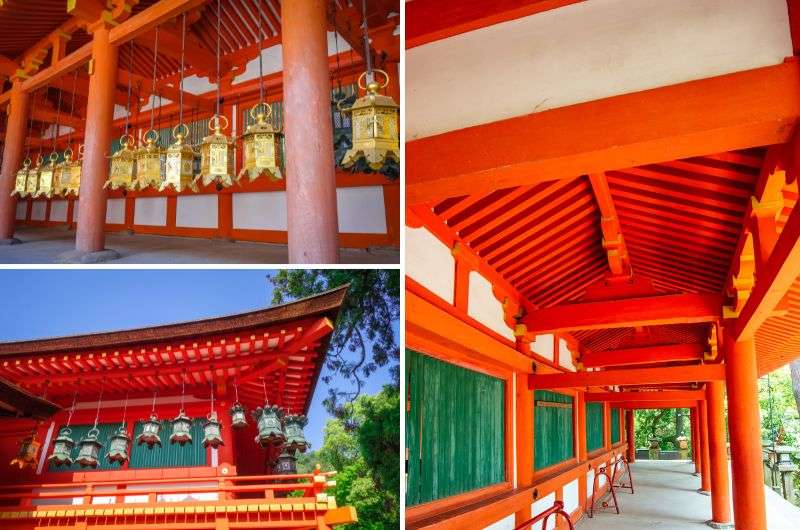
The red Kasuga Taisha
Distance from last stop: 700 m (0.4 mi), 10-minute walk
Time spent there: 30 minutes
Next, walk 10 minutes to Nara’s most special shrine, Kasuga Taisha, which is thought to protect the entire city. I don’t want to be a Debbie Downer, but even though it’s the most celebrated shrine, it was just another shrine to me. Japan’s highlights do start feeling a little monotone, and when you’re at your 20th shrine, you can’t help but feel you’ve already seen it.
But let me try to be objective here—there are hundreds of lanterns at Kasuga, all of which were donated by worshippers, which do look very nice. There are stone ones lining the pathways and bronze ones hanging from edged of the rooftops. I haven’t experienced the biannual lantern festivals where all the lanterns light up, but it may have been that little extra something that would’ve made me love Kasuga Taisha, too. The festival takes place every February and August.
If you want to really shrine yourself out, walk the path in the woods that connects 12 extra shrines, each one dedicated to one god. Behind Kasuga Taisha, you can see the Kasuga Primeval Forest covering the mountain slopes. Keyword “see”, as you can’t actually enter the sacred forest.
- Temple tickets: JPY 500 for the inner area, otherwise free
Day 3—Nara—stop 4: Naramachi quarter
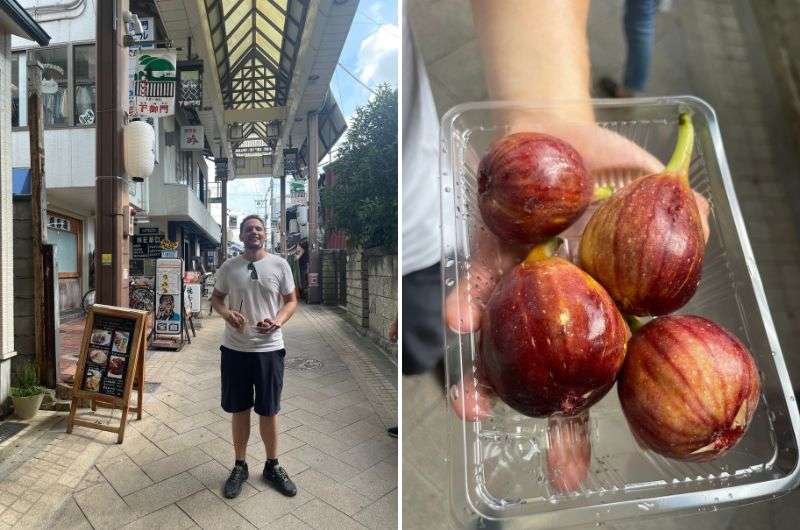
Wooden buildings of Naramachi quarter
Distance from last stop: 1.5 km (0.8 mi), 20-minute walk
Time spent there: 1.5 hours
Don’t lie, even you are ready for a shrine break just about now. Walk a little ways down from Kagusa Taisha into Naramachi, the old merchant quarter of the city.
Not only will you walk among the old, narrow wooden buildings and feel like you’ve stepped back in time; the bonus modern twist is plenty of cafes and bakeries, something you’ll only really appreciate after spending some time in Japan. I think this is where I had my best coffee in Japan, so I have very fond memories. I unfortunately couldn’t tell you the exact cafe if you twisted my arm, so I’ll let you find your own caffeinated treasure. We can pretend it’s on purpose! There were many, many options to choose from.
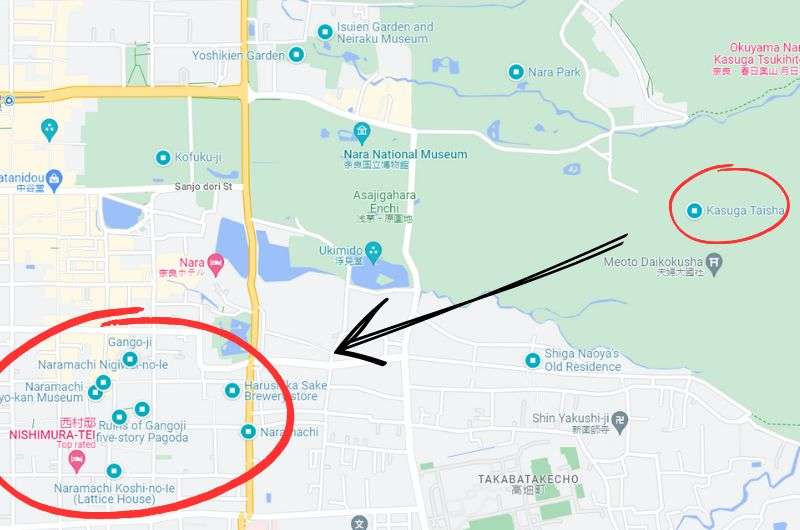
From Kasuga Taisha, make your way to this part of Naramachi quarter. Go to my Google Maps list to see all the points of interest
Day 3—Nara—stop 5: Yoshikien and Isuien Gardens
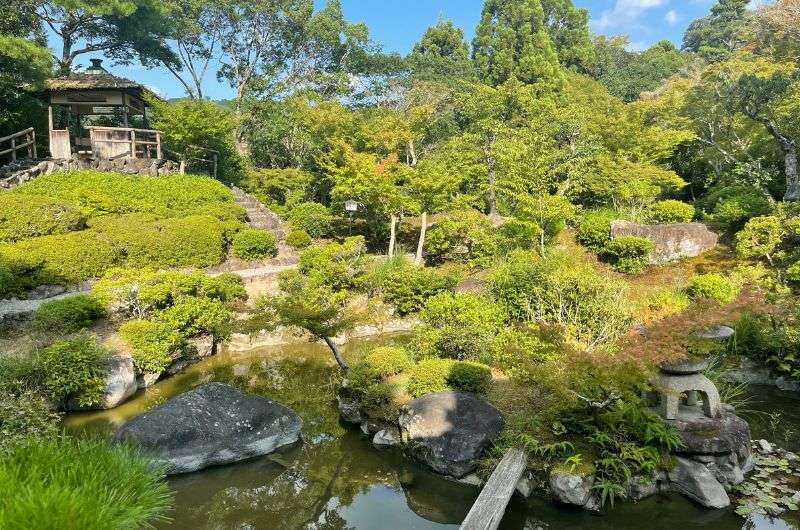
Yoshikien Garden
Distance from last stop: 1.5 km (0.8 mi), 20-minute walk
Time spent there: 1 hour
Surprise! You’re not ending the 3rd day on your itinerary with a temple! How very unique of me! Plus, you’ll get to see several types of Japanese gardens all in one spot. Or rather, in two spots, but Yoshikien Garden and Isuien Garden are just across the river from each other, so you could pretend it’s one spot had it not been for the entrance fee you’ll pay at Isuien.
Yoshikien Garden is built in the place where the priest residences of neighboring Kofukuji once stood. It’s not very big despite having three separate areas: the moss garden, where the ground is covered in moss, a pond garden (you can surely guess what you’ll find there), and the tea ceremony garden with a tea house. It’s interesting to see the differences between the three, and if you manage to visit at a time that’s less busy, it has a very peaceful atmosphere. I’m not into energy flows and whatnot, but I felt a very nice sense of calmness when we were walking around (that may be because I had just had that great coffee in Naramachi though!).
Isuien Garden, just across the river from Yoshikien, is the larger of the two and gets to use Tōdai-ji’s Nandaimon Gate as part of its background. Maybe that’s why they dare charge the relatively steep entrance fee of JPY 1200. The front garden is much older than the rear garden, and both have teahouses scattered throughout. We thought the staff was very friendly and even gave us a little introduction to Japanese gardens (in perfect i.e. easy-to-understand English!).
- Tickets: JPY 1200 for Isuien Garden, Yoshikien is free
- Isuien is closed on Tuesdays and closes at 4:30 pm, Yoshikien is open daily until 5 pm
Dinner in Kyoto
The gardens close at the perfect time to drive back to Kyoto, get cleaned up and head out to dinner. These are some of Kyotos well-reviewed restaurants:
- Teppansousaku Lien (teppaniyaki)
- Hanaroku (teppaniyaki)
- Terato Restaurant (sushi)
Day 4 of Kyoto itinerary: Osaka
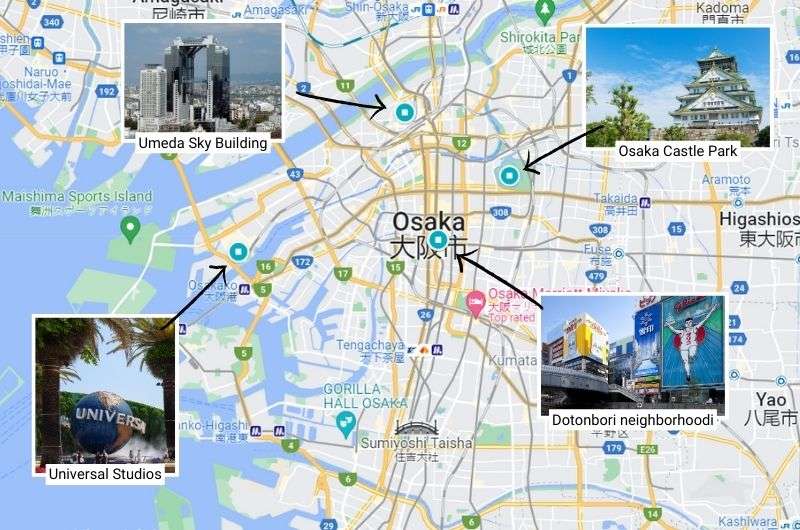
You’ll need to make a choice in Osaka: Universal Studios or everything else?
Main sites visited on day 4: Universal Studios OR Dotonbori neighborhood, Shinsaibashi or Horie quarter, Osaka Castle Park, Umeda Sky Building
Restaurant tips: just eat street food!
Hotel recommendations: KAYA Kyoto Nijo Castle (unless you want to turn this day trip into a late-night trip and need a place to crash in Osaka—Onyado Nono Osaka Yodoyabashi even has it’s own onsen!)
How your last day on the Kyoto Nara Osaka itinerary goes is up to your preferences: Universal Studios or no Universal Studios? That is the question.
Osaka is very different to Kyoto and Nara. So today, you’ll be done with quaint streets, serene nature, and ancient history and getting some big city life!
Day 4—Osaka—option 1: Universal Studios
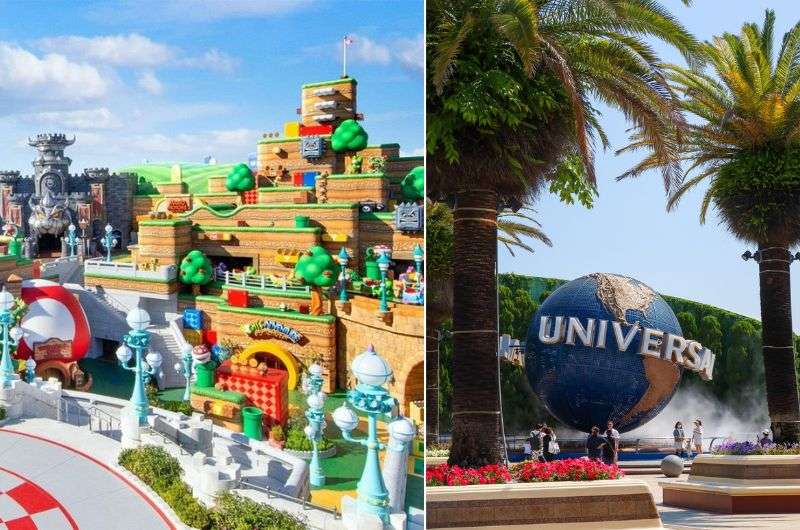
Universal Studios in Osaka
Distance from KAYA Kyoto Nijo Castle: 65 km (40 mi), 1.5-hour drive
Time spent there: all day
For me, Osaka means two things: Universal Studios and street food. If you’re looking for a something to change it up for a day, I’d say spend it at Universal Studios. Japan’s Univeral park is considered one of the best in the world, and you’ll still get a very Japanese experience since everyone and their uncle seems to LOVE movies like Harry Potter or the Minions that have their own sections in the park. Japanese fans are just something else! Not to mention that getting into Super Nintendo Land is like trying to win a game of real-life Mario Kart without any power-ups. People go crazy about it! So crazy that you need to score one of the coveted timed tickets, otherwise you’re out of luck.
Some insider tips for Universal Studios Osaka:
- Get there 1 hour before the official opening time (which is usually at 8 am). They always seem to open early, and even though it’s never official, everything is up and running the moment those gates open, giving you a special crowd-less park experience.
- Get your Super Nintendo World tickets asap. Either with your express pass, or you’ll have to race to get your time slot the minute you step into the park in the morning… and then you’ll still be lucky to snag a late afternoon spot. I’m telling you, it’s more popular than Shibuya Crossing in Tokyo!
- It’s busy and lines for rides are long. If your wallet can take the hit, buy the express pass. It may cost more than the day ticket, but hey, it’s not like you’ll visit ever again, so make it count!
- Catch the parade, it’s a hoot! The newest edition, No Limit! Parade, which started in 2023, features Super Mario and Pokémon characters. Get a good viewing spot, the parade starts at 2 pm most days.
- Use the “single rider” lines to save time. You’ll probably be separated from your group, so I wouldn’t use it with children, but if you just want to get on board already, this could be your secret. If you don’t like the sound of that, well, I told you to get the express pass!
For those of you that have no desire to embark on an intergalactic expedition to save the sun or to meet Gru and Lucy, here’s a more classic Osaka itinerary for a day trip from Kyoto:
Day 4—Osaka—stop 1: Dotonbori neighborhood
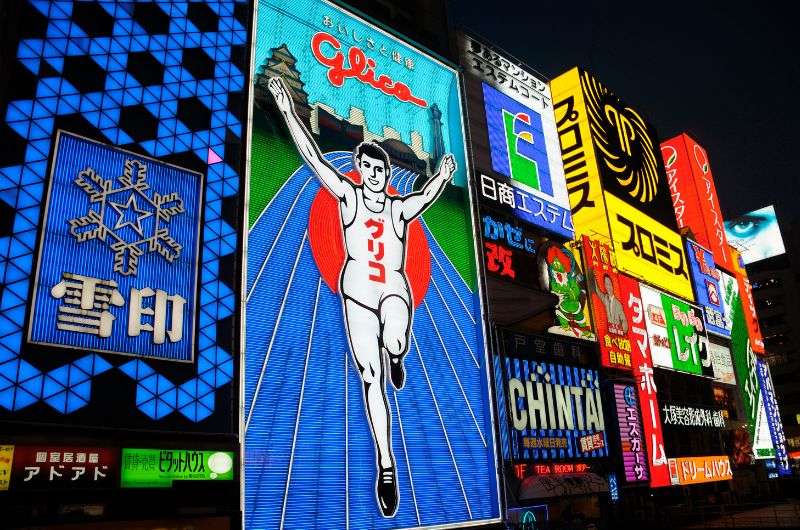
The Dotonbori neighborhood culture and the famous Glica Running Man billboard
Distance from KAYA Kyoto Nijo Castle: 65 km (40 mi), 1.5-hour drive
Time spent there: 2–3 hours
Osaka is Japan’s second largest city and as such is a lively place, and country’s street food capital. It’s known for its fun atmosphere and unique culture, where eating, shopping, and people-watching are the top things to do. If you’re coming to Osaka and not visiting Universal, you can take your time in the morning there’s no need to get there at the crack of dawn. Instead, stay until the evening, when Osaka’s personality really shines (and so do the billboards).
That may sound very vague, but just get yourself to the Dotonbori neighborhood and you’ll know what I mean. With just a day in Osaka you may not get the full experience of the billboards lit up at night, but it’s still bustling enough at any time of day. Walk bythe river and just eat and drink your way along. Keep an eye out for the famous Glico running man billboard located close to Ebisubashi Bridge, which itself is the perfect photo spot.
There’s not much to actually do, but you’ll see that you’ll enjoy being sucked into the city’s action for a change and not trying to stay quiet on some temple’s grounds, making sure a deer isn’t eating its way through your backpack.
While you’re at it, try to see if you can hear the difference in the local dialect. Locals sound much more harsh than in other parts of Japan, which is funny considering they all seem extra friendly at the same time.
Day 4—Osaka—stop 2: Trendy neighborhoods of Osaka
Distance from last stop: just walk across the river from Dotonbori
Time spent there: 1 hour
Osaka is more than Dotonbori, though the trendiest places are a natural extension to it. You can get your retail therapy on at Shinsaibashi shopping disctrict, or, if you’re a little more artsy, head to Horie. Think organic bistros, coffee houses, and smaller shops trying to sell very strange/old/peculiar things.
I’d stay clear of Amerika-mura unless you’re a teenager or still think being a hipster is cool.
Day 4—Osaka—stop 3: Osaka Castle Park
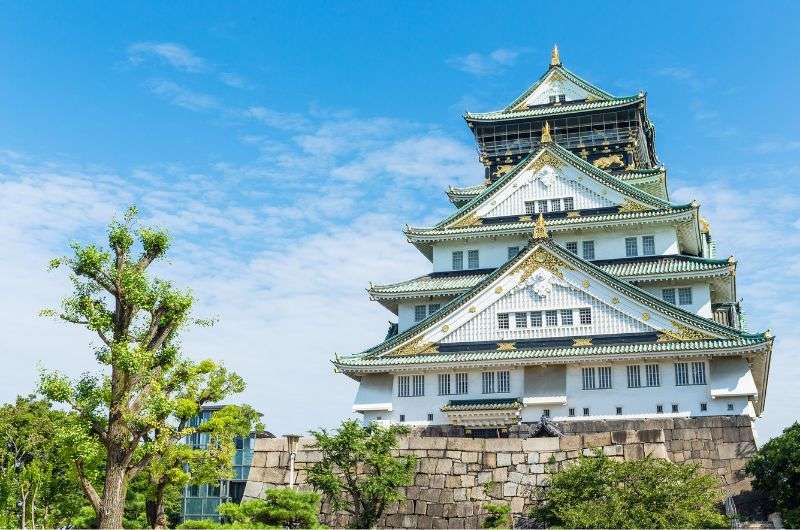
Osaka Castle Park
Distance from last stop: 3.5 km (2.2 mi), 10-minute drive
Time spent there: 1 hour or however long you feel like strolling
Osaka Castle isn’t anything you’ll be dropping your jaw over, but it isn’t ugly and it does have a very nice garden attached to it where you can experience a different side to Osaka. It’s conveniently located on the way to your next (last) stop in Osaka, so I recommend taking an hour or two to just unwind—it's like the perfect palette cleanser.
Strolling around, you’ll find plenty of spots to relax and take a breather. It’s a green oasis in the midst of the city’s hustle and bustle. Perfect for some people-watching or just lounging on a bench, contemplating life or what to eat next.
Day 4—Osaka—stop 4: Umeda Sky Building
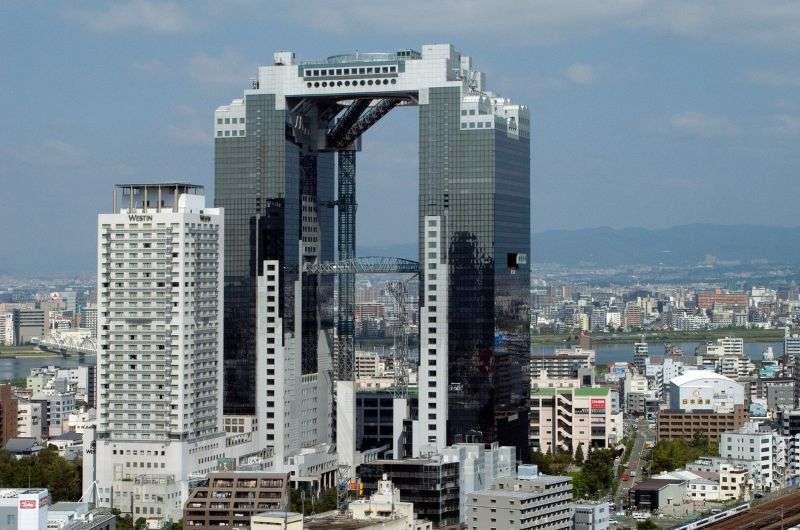
Umeda Sky Building
Distance from last stop: km (40 mi), 1.5-hour drive
Time spent there: 45 minutes
Keeping with the “modern Japan” theme, you’ll want to end your day in Osaka by checking out the Umeda Sky Building that towers over Osaka's skyline. This futuristic skyscraper, standing at 1173 m (about 570 ft) offers one of the best views of the city. Its unique design features two towers connected by the "Floating Garden Observatory" on the 39th floor, providing a 360-degree panoramic view over Osaka (don’t expect an actual garden!). People go up and down in those escalator tunnels over and over again just to experience the exhilarating feeling of being so high up with little structure around them.
So, there I was, standing on this sky-high, open-air observation deck, feeling like a superhero on a secret mission. The elevator ride up is its own kind of thrill. It's like being shot up into space, but with more Japanese announcements and less floating. Once you're up there, the view is nuts! You can see the whole of Osaka, and on a clear day, I swear you can almost see the future.
The best part of the Umeda Sky Building is definitely the escalator to the observatory. It's outside between the buildings! You're basically in a glass tube in the sky, so no wonder people take several runs on this thing.
The building itself is mostly offices, yawn, but there are a couple of restaurants and cafes if you want to sit down and calm your vertigo down before driving back to Kyoto.
- Umeda Sky Building official website
- Tickets: from JPY 1500
This post contains affiliate links. I earn a small commission if you make bookings through my links, at no additional cost to you. Thank you for your support!
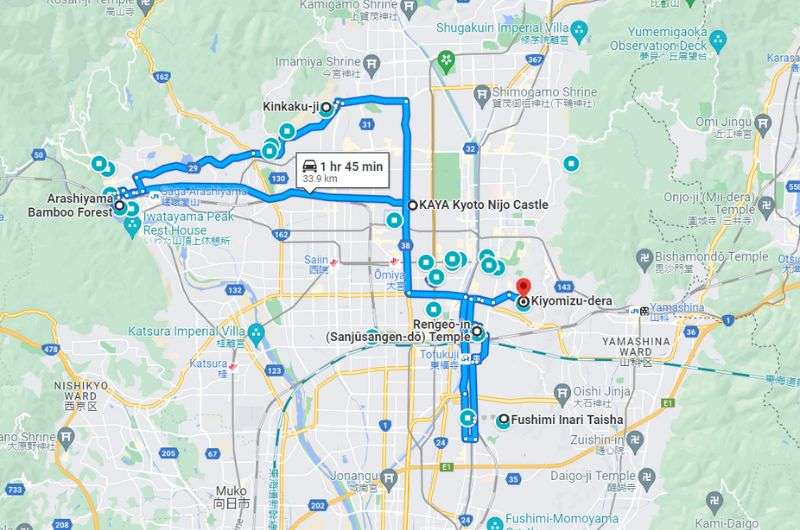
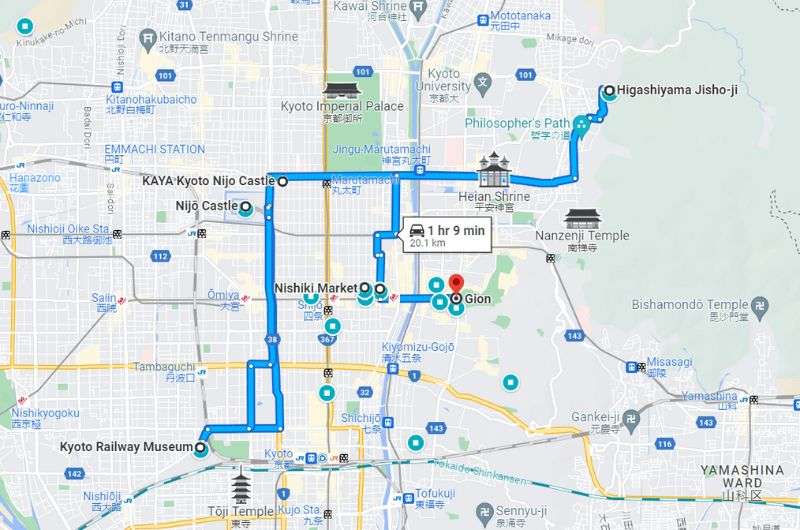
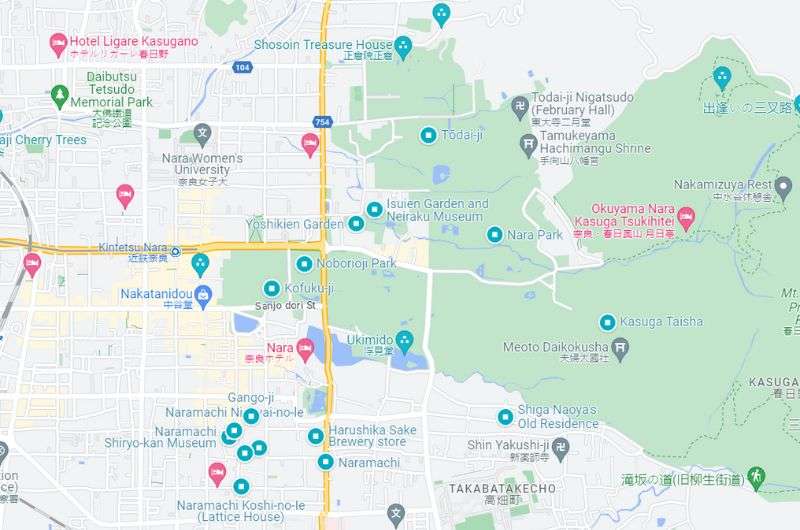
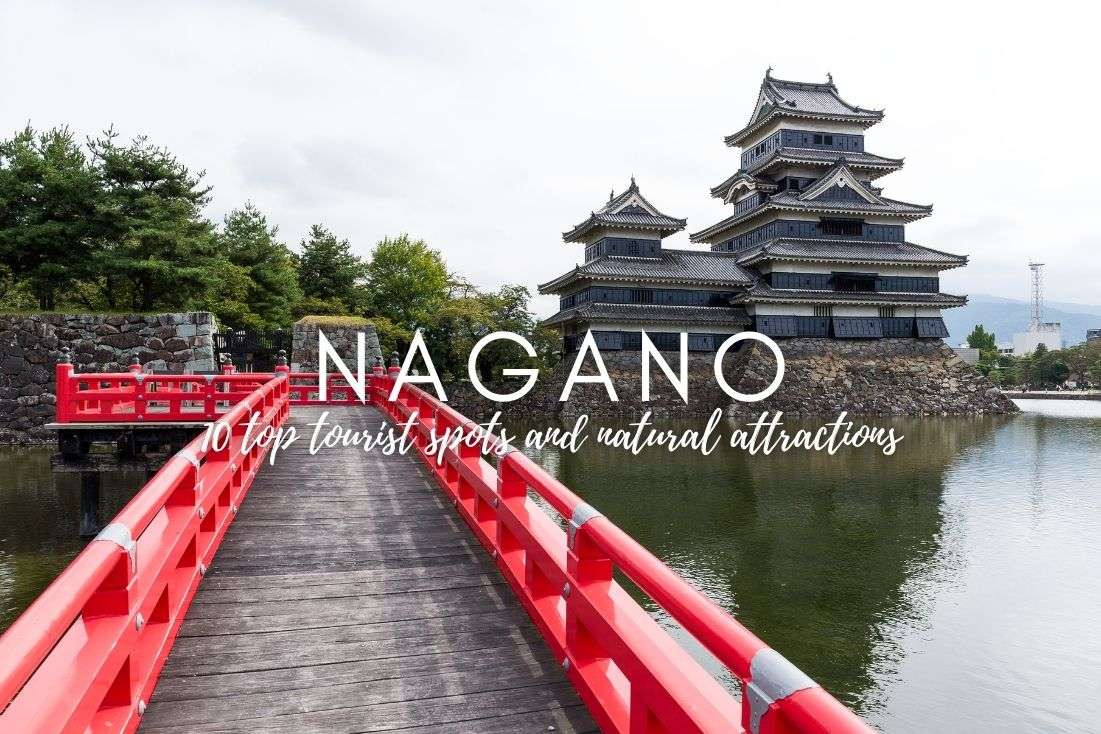
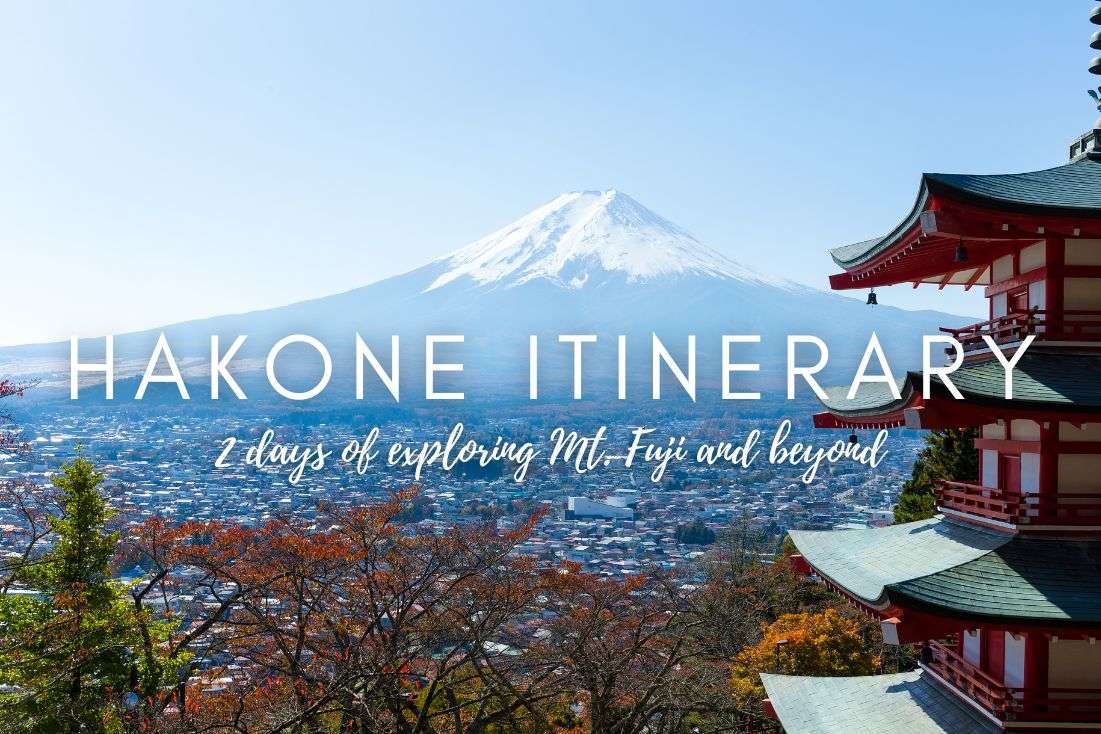
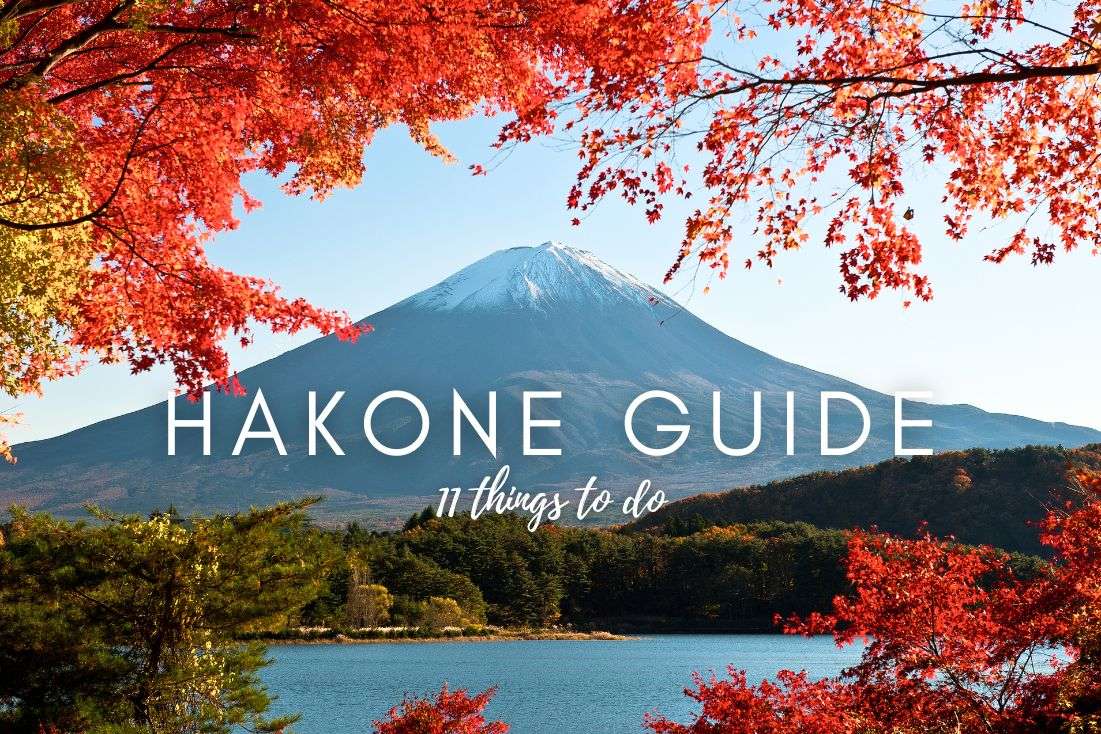




Comments
Thoughts? Give us a shout!